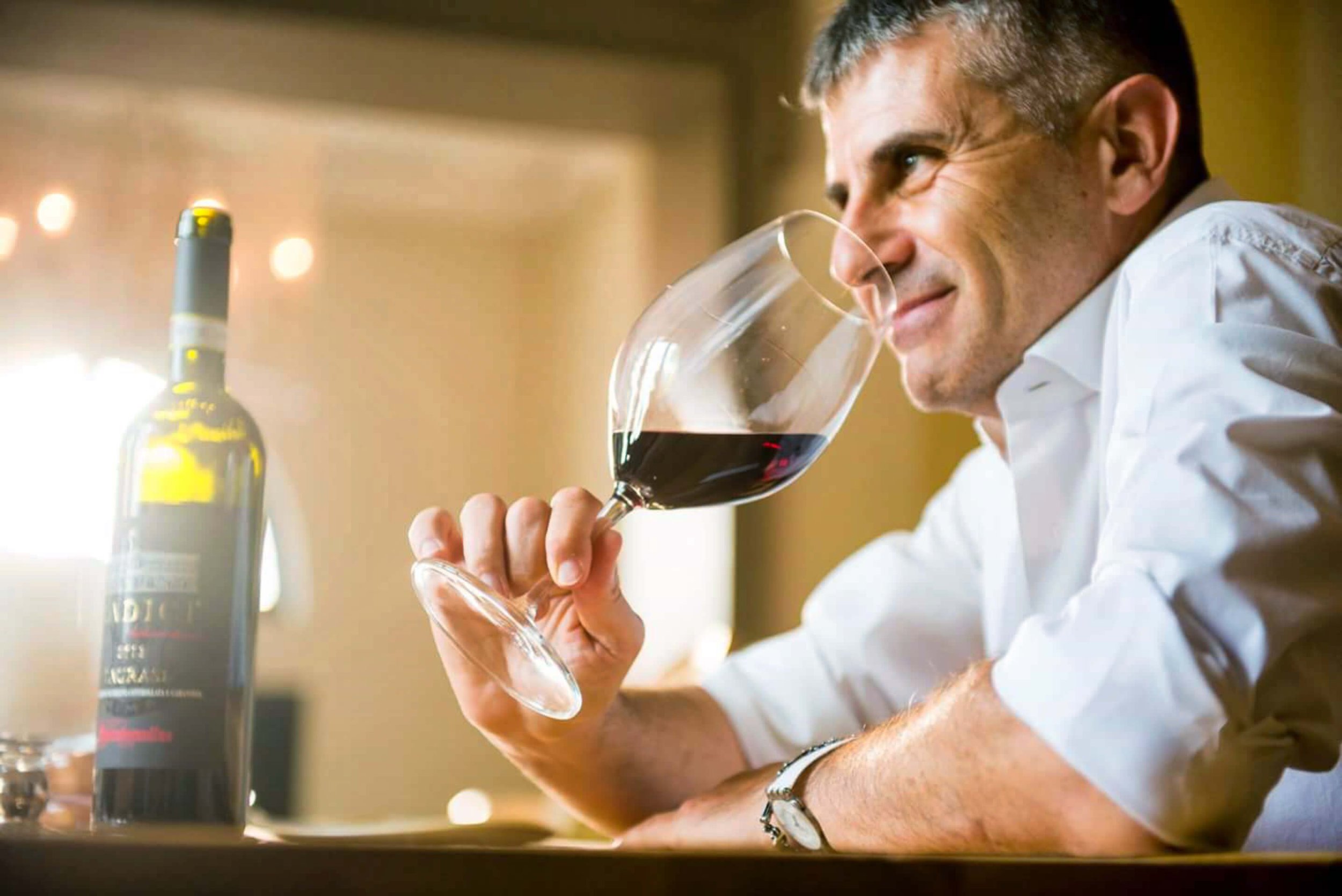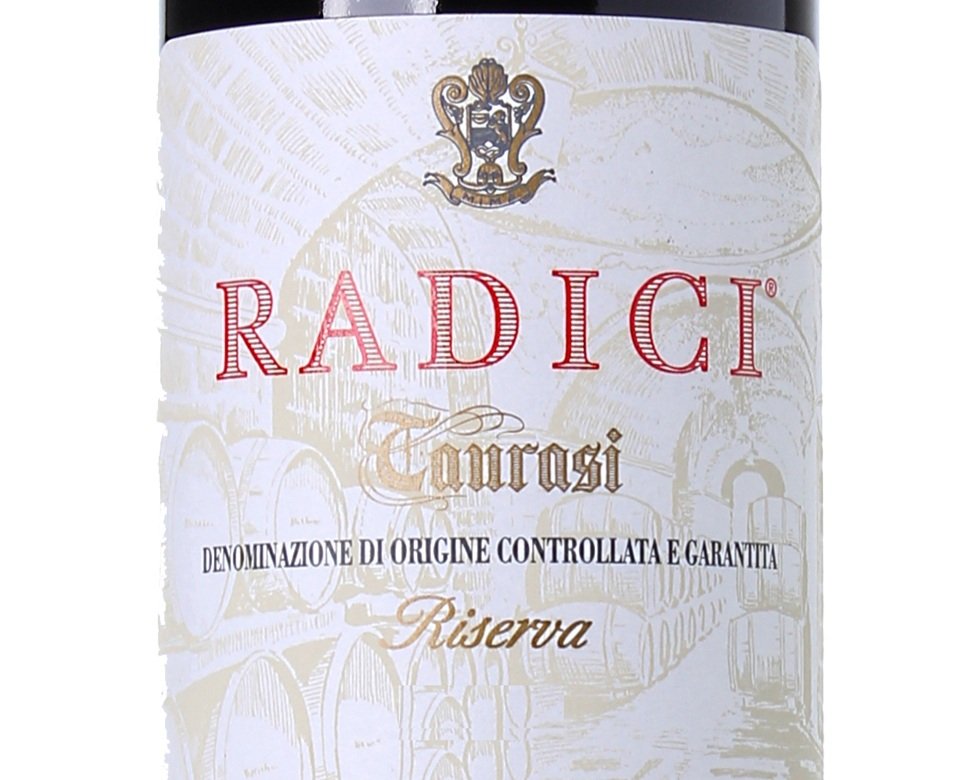mastroberardino
Piero Mastroberardino
Atripalda
irpinia - Campania - italy
story…
Mastroberardino is by & far the most historically significant winery south of Tuscany. No family or winery has done as much for a single region & it’s indigenous grapes than the Mastroberardino family has done for Campania & the local indigenous grapes: Aglianico, Fiano, Greco, Coda di Volpe, & Piedirosso. The family’s ties to this region date back as far as the late 1600’s, and they have owned/resided in the Atripalda area of Irpinia since around 1747 when they first purchased land there. The original founding of the estate as a wine production business didn’t come until 1878, but since then they have been the most constant & dedicated force for Campania & it’s local wines.
Much of what Mastroberardino is & has become is due to late, great Antonio Mastroberardino’s work, who after returning from WWII to find his family’s estate in ruins from the war, neglect, & phylloxera. He doubled down all efforts to rebuild it to its former glory. Restoring all previous vineyards & expanding their holdings while holding fast to the native, local varitals. Antonio essentially single handedly kept Fiano, Greco, Coda di Volpe, Piedirosso & Aglianico from going extinct post World War II & for many years the family estate was the only one still producing wines from these local varietals. Many producers in the area, desperate to survive in the post war era, made the had decision to switch to international varieties that were easier to sell & were in higher demand. Mastroberardino were also early pioneers of exporting to foreign markets, their wines have had a long tradition of being sold across the globe well before prohibition in the US & the World Wars. Having outlets in countries & continents that most Italian producer didn’t start exploring until well into the middle of the 20th century, these export markets included; most of Europe, South America, North America & Africa. This early adoption of exportation helped the family navigate so many ups & downs in it’s 100+ years of producing & selling wine.
Today the estate is run by Piero Mastroberardino, Antonio’s son, who is the tenth generation of his family to oversee the estate. Apart from being the CEO of the family business Piero is also a Professor of Business Management & an author of several scientific publications on management issues as well a couple poetry books. Piero continues to push the Mastroberardino estate forward, just as his father, grandfather, & so many of the family did before him. After working so tirelessly to wave the flag for their region & its wines many would expect that once you hit the top, as Mastroberardino have, you would just sit back enjoy the spoils of your efforts, but not this family. They are just as innovative & driven as they have ever been. While keeping one foot in the history & traditions of the region, they simultaneously are constantly researching & developing better ways to farm, encouraging biodiversity & sustainability on their vast estate holdings. Their efforts span the gambit of researching & cultivating native grapevines as well as planting massale selections of pre-phylloxera biotypes to better understand them. Their work towards sustainability is ever evolving, one that doesn’t just begin & end with wine but for sustainability across all sectors of their business, including; energy, waste, water, farming, business practices, & taking care of those who work for them or are effected by their work. They truly spare no expense when working towards making all aspects of their business better for all involved.
To learn more on their work in this we highly suggest you visit their MASTROGREEN site which goes into much further detail about their studies & developments towards being a more sustainable business.
The continues to be a guiding light for all others in their region. The wines are legendary & continue to be such, particularly their infamous 1968 single cru bottlings which were only produced that one year. One of their most recent endeavours began in the late 90’s when they struck up a collaborative project with the Archaeological Superintendency of Pompeii. The project has allowed the family to replant grapes within the ancient ruins of Pompeii where grapevines had grown prior to the volcanic eruption that wiped out the city 2000 years ago. The first plantings were done in 2000 & the vines are staked in the exact locations that they were in 79 A.D. based on plaster casts made by the Archaeological Superintendency. This project is called “Villa dei Misteri” & since it’s inception they have also uncovered more locations in the city where grapevines once grew and have started to plant this area as well. It’s incredibly commendable the amount of dedication they have to understanding & learning more about the history of the region, while also maintaining a forward thinking wine estate.
philosophy…
As noted above the estate has a very strong & dedicated focus on sustainability, as well as tradition. Though they hold several different certifications for the farming techniques on their land, none really define their practices precisely. In broad strokes they implement sustainable & organic practices across their entire estate. Only a fraction of their land holdings are planted to grape vines, about 200+ hectares, the remainder makes up what they call their “landscape mosaic” which is comprised of alternating parcels of land with native woods & vegetation, olive groves, & of course vineyards. They implement a multitude of specific practices to help maintain soil health & biodiversity in the vineyards & olive groves. These practices include, but are not exclusive to; soil conservation to reduce erosion, dry farming, & planting of native grasses & other flora to attract pollinators & beneficial insects.
In the cellar their work is a healthy mix of modern & traditional. Nearly all fermentations are carried out via temperature controlled stainless steel tanks. They have spent years researching & isolating the most important yeasts strains found in their vineyards, which they now have cultured for them from these native strains to be used in conjunction with the fruit that comes from the same source as each particular strain was found. The aging of the wines varies a bit, but like most wine producers it can generally be split between the white/rosasto production & the red production. For their white & rosato wines, the wines are all aged entirely in stainless steel tank for a relatively short period before being bottled & aged a further few months in bottle. The great majority of their red wines are aged in some combination of French barrique & Slavonian casks, before being bottled & further aged anywhere from a few months to several years prior to release. A few of their reds, mostly their wines meant for more immediate pleasure, are aged entirely in stainless steel, then in bottle for a period before being released.
Vineyards…
The Mastroberardino vineyard plantings consist of 200+ hectares of vines spread across the entirety of Campania. Most of which are focused centrally in the greater Irpinia region & sub-regions of Taurasi, Avellino, Tufo, & Sannio areas, as well as in the Vesuvio region surrounding Mount Vesuvius near the coast.
Mirabella Eclano
both the largest & the main estate vineyard of Mastroberardino consisting of 65 ha of vines at range of 350-450 masl | deep sandy loam soils with a volcanic matrix of clay & limestone | planted primarily to Aglianico, including the estates oldest plantings that around 50+ years of age | this is also where the family conducts much of their vine material & farming experiments before implementation in other vineyards
Montemarano
a very historic site at the southernmost point of the appellation, consisting of 17 ha of vines planted entirely to Aglianico at 500-650 masl | clay heavy soils with a good content of organic substance & calcareous crushed stone
Paternopoli
a 4 ha estate planted entirely to Aglianico at 540 masl
Torella dei Lombardi
a 8 ha estate that sits at 550 masl planted entirely to Aglianico | sandstone soils with marl
Montefalcione
a 30 ha estate planted exclusively to Fiano with a rather high plant density of 5,000 vines/ha in sandy volcanic soils at 450 masl | it also plays host to some viticultural experiments for the family studying the effects of different rootstocks, plant densities & training systems
Manocalzati
located in the medieval village of San Barbato about 5 km northeast of Atripalda, planted entirely to Fiano in clay heavy soils at 420 masl
Santo Stefano del Sole
a 10 ha estate planted exclusively to Fiano located on a hill at 500-600 masl overlooking the town of Santo Stefano del Sole | sandy loam with deep clay & calcareous sandstone | fruit from this vineyard is primarily used for the Radici bottling of Fiano as well as for the Melizie Irpinia Fiano DOC Passito
Lapio
a 11 ha estate located at the corner of the region that is shared by both Taurasi DOCG & Fiano di Avellino DOCG | planted in clayey limestone soils at 400 masl
Pietradefusi
a 3 ha estate located just outside the town of Pietradefusi, which is one of the oldest towns in Avellino | clay heavy soils rich in minerals at 350 masl | vineyards are planted primarily to Aglianico which is used in the production of the estate’s Lacrimarosa Irpinia Rosato DOC
Montefusco
located at the top of hill located at the north east end of the region, consisting of 16 ha of vines planted between 450-600 masl | planted entirely to Greco | clayey loam soils derived from sandstone & marl
Tufo
located just outside of the town of Tufo itself, consisting of 16 ha of vines planted entirely to Greco at 400 masl | clayey/limestone soils
Santa Paolina
located about 2km from the town of Santa Paolina, consisting of 8 ha of vines planted in clayey/calcareous soils at 350 masl | the fruit from this site is exclusively used for their Vignadangelo bottling of Greco di Tufo
Petruro Irpino
an 18 ha estate of Greco vines | planted in clayey/limestone soils at 350 masl
Apice
located in Benevento in the Falanghina del Sannio DOC, consisting of 42 ha between 300-600 masl | medium textured sandy/loam soils rich in minerals | planted primarily to Falanghina















